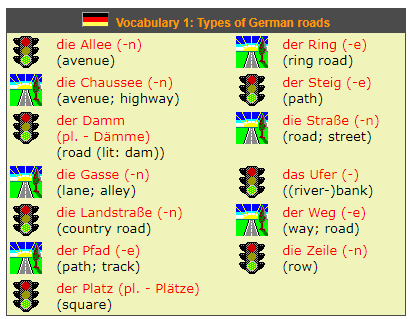On the following three pages you will find a basic introduction to structuring a German letter. The German Department of the University of Exeter has developed a web-site on how to write a German letter and this can be accessed by clicking here:
The address (die Adresse)
German addresses are much shorter than British addresses. wheras British addresses can extend to six or seven lines with their house names, villages, town and counties, addresses in German-speaking countries tend to contain only three lines - the name of the addressee, the street name and number and the town/city together with the post code. Other differences include:
German street numbers occur after the name of the street and not before - e.g. Hauptstraße 43, Wolburgsweg 36c, Webergasse 7-9.
Postcodes in German-speaking countries precede the name of the town or city - e.g. 10825 Berlin, 09117 Chemnitz, 01069 Dresden.
Street names (der Straßenname)
German street names are usually one or two words long, depending on the nature of the first element of the name. wheras streets named after people tend to written as one word - e.g. Schillerstraße, Brahmsweg -, cities and regions that appear in street names are for example usually written as a separate word - e.g. Berliner Straße, Frankfurter Allee, Leipziger Platz.
The signpost below bears this out. Lothringer Weg is written as two words as it is named after the German word for the region of Lorraine (= Lothringen). Goetheallee on the other hand is written as one word as it celebrates Germany's most famous writer Johann Wolfgang von Goethe (1749-1832).

 英语
英语 日语
日语 韩语
韩语 法语
法语 西班牙语
西班牙语 意大利语
意大利语 阿拉伯语
阿拉伯语 葡萄牙语
葡萄牙语 越南语
越南语 俄语
俄语 芬兰语
芬兰语 泰语
泰语 丹麦语
丹麦语 对外汉语
对外汉语

